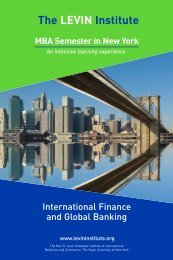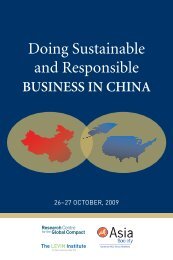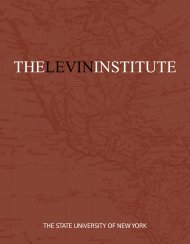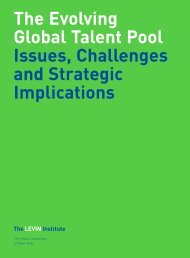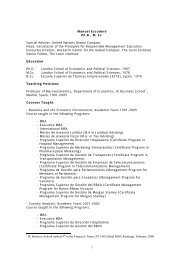The Evolving Global Talent Pool Lessons from the BRICS Countries
The Evolving Global Talent Pool Lessons from the BRICS Countries
The Evolving Global Talent Pool Lessons from the BRICS Countries
Create successful ePaper yourself
Turn your PDF publications into a flip-book with our unique Google optimized e-Paper software.
R. Venkatesan<br />
and Wlima Wadhwa<br />
National Council of Applied<br />
Economic Research<br />
Indian <strong>Talent</strong> in Science and Technology:<br />
An Assessment of Quantity and Quality<br />
1 India faces a talent crunch in coming years. If <strong>the</strong> economy<br />
continues on its current pace, <strong>the</strong>re is a predicted shortage of engineers<br />
(both degree and diploma holding) of 60,000 by 2010 and 2.45 million<br />
by 2020. <strong>The</strong> shortage is even more pronounced among degree-holding<br />
engineers. Under an optimistic scenario in which economy would<br />
generate such demand that <strong>the</strong> shortage of degree-holding engineers<br />
would be 150,000 by 2010 and 1.6 million in 2020. Such undersupply<br />
could be predicted to act as a brake on <strong>the</strong> economy, pushing its<br />
performance back toward more pessimistic outcomes.<br />
2 Most demand for technical talent has been driven by <strong>the</strong><br />
rapid growth of <strong>the</strong> service sector, in particular for business process<br />
outsourcing.<br />
3 India’s talent growth has been focused on information and<br />
communications technologies. While both biotech and nanotech are<br />
seen as critical, anticipated quantity and quality issues are very high<br />
according to industry interviews.<br />
4 In 2004, 40.2 million Indians were qualified as HRST by education,<br />
26.8 million by occupation, with 14.2 million being core as <strong>the</strong>y<br />
possessed both education and occupational qualifications, which<br />
accounted for 3.9% of <strong>the</strong> workforce. However, only about 35% of those<br />
holding HRST jobs were educationally qualified for those jobs. This<br />
proportion has been falling since 1981 when 43% of those who were<br />
HRST with education qualification were employed in HRST jobs.<br />
5 Total stock of scientists in 2001 is reported as 5.53 million, with<br />
additional 2.56 million engineers reported. Of <strong>the</strong> engineers, one-third<br />
are reported as degree holders, with 1,000 (0.04%) reported to have<br />
doctorates.<br />
6 Total enrollment in higher education exceeded 10 million in<br />
2004–05 academic year, of which some 35% are registered in science<br />
and engineering (including social sciences).<br />
7 In 2006, India enrolled 885,000 new engineering students, of which<br />
65.8% are in degree programs. Never<strong>the</strong>less, as India always enrolls<br />
more science majors than engineering majors, it is likely that <strong>the</strong> 2006<br />
enrollment of science majors reached 2.6 million (see Table 3).<br />
8 Quality measures are very unreliable, with estimates ranging <strong>from</strong><br />
15% to 50% of Indian engineers having <strong>the</strong> proper qualities for high-end<br />
knowledge work.<br />
9 Over 90% of <strong>the</strong> population is employed in <strong>the</strong> informal sector,<br />
making accurate understanding of <strong>the</strong> talent pool very challenging.<br />
10 Only 17% of Indians mid-twenties and older have secondary<br />
education.<br />
<strong>The</strong> <strong>Evolving</strong> <strong>Global</strong> <strong>Talent</strong> <strong>Pool</strong><br />
12



